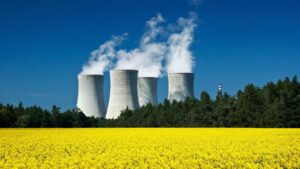
Needless to say, when operating in remote, hazardous environments, end users are faced with various types of danger. It is therefore necessary for them to be assisted with video surveillance, which must be hardened to combat the harsh conditions.
Video is important for hazardous sites due to various reasons. First, a lot of hazardous sites are short-staffed. Often in these settings, there will be few to no workers regularly on the ground, so it is of paramount importance that there is a way to observe what is going on on-site, from monitoring the performance of equipment through to ensuring remote workers like repair personnel are adhering to strict safety protocol.
Further, these sites are subject to criminal or even terrorist activities. The nature of a lot of hazardous environments – remote, private and often full of valuable and/or hazardous assets – means that they are often targeted by criminals with intentions ranging from vandalism and theft right through to terrorist interference that could cause extreme disruption to communities and even fatalities. Therefore a comprehensive security plan is needed.
Digital eye
Video has in essence become the digital eye in these environments, and the insights they provide can mean life or death in critical situations. Due to the importance of video, it’s necessary to protect the equipment against factors such as inclement weather conditions, vibrations, fires and explosion.
High-quality video solutions combined with protective enclosures are one example of how critical sites are being protected. For example, IP cameras are available with heavy-duty enclosures, classified according to different systems, such as class/division and zone systems, for use in hazardous areas where flammable material (liquids, gas, vapor, or dust) may be present. Additionally, the enclosures make them highly resistant to high-pressure water jets, dust and vandalism, which is especially important in safeguarding critical infrastructure facilities.
More connected
With video surveillance moving more and more towards IP and becoming part of the Internet of Things (IoT) scheme, end users operating in hazardous sites can hugely benefit from it.
Connected cameras can be easily integrated into the facilities’ system to seamlessly work alongside other security solutions, from alarms and public announcement systems through to access control solutions and sensors that monitor the state of equipment. This means, the security and safety technology run off the same system, and all the data they collect can be centrally aggregated to give increased intelligence and insight into the operations of a facility.
End users can be helped with data generated by video. One area of concern across all markets and sectors is cybersecurity and with connected cameras organizations can quickly and remotely identify and repair any issues with the cameras being hacked. They can also benefit by having remote intelligence for situational awareness, emergency management as well as opportunities to provide advanced asset performance management.
The ability to support AI functionality is becoming increasingly important in all markets – but especially in hazardous environments where machines are more likely to be “on the ground” than people, there needs to be an objective, reliable way for any issues to be swiftly identified and resolved before an accident or malfunction occurs.
This makes open platforms more important. By using open platforms, it is easy to integrate third party analytics to meet the individual needs of each environment and for system integrators to modify and adjust the camera, as well as ensure it is properly maintained to avoid cybersecurity risks.
Source: a&s Magazine



































































